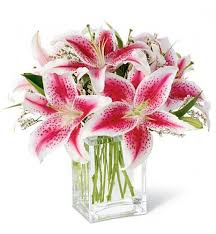
I hope your not tired of plants by now... because if you are.. bad news! MORE PLANTS are coming your way! :D But... good news, its my favorite, and the most beautiful in my opinion! We'll be talking about flowers! YAY! This means a lot of beautiful pictures of them(: And really interesting facts! Sadly, this is going to be my final Science Blog EVER. Yep, EVER. Because I'm not going to Shreiner next year, and I will defiantly miss everything and a lot of people here... This is my last blog, and last year. I hope it's a good one(:
What we're gonna be learning today....
- The Similarities between the lifestyles of angiosperms and gymnosperms(:
- 3 methods of seed dispersal in plants(:
- Diagram the parts of a flower and label their functions(:
- Choose my favorite flower and teach about it(:
Similarities between lifestyles of angiosperms and gymnosperms
- Angiosperms are flower plants, while gymnosperms are mostly trees.
- The way the reproduce effects there life cycle, gymnosperms use cones to reproduce and there are female and male cones, but angiosperms have male flowers, female flowers, and perfect flowers... which are both male and female.
- They both reproduce with seeds, and drop seeds on the ground so they can reproduce.
- Angiosperms and gymnosperms take two generations to complete one life cycle.
- Angiosperms produce fruit and flowers, gymnosperms produce pine cones.

Like us humans, plants have genders too! Yep, they have a male and female.
The female flower is called a pistil.
The pistil has 4 parts to it.
Style-Females have style! The style helps support and hold the pistil, it's located on top of the ovary, and beneath the stigma.
Stigma-Top Sticky portion of pistil, catches pollen when the plant is ready to make its seed.
Ovary-The female reproductive organ of a flower, and holds the eggs. It is found at the bottom of the pistil.
Ovule- The ovule actually produces the egg, unlike the ovary, which just holds it. The egg that the ovule holds will become a seed.
Now, let's go on to the male flowers. The male flowers are way less complicated then the female, so this should be a breeze.(:
The male flower is called the Stamen.
The Stamen has 2 parts to it.
- Anther-Produces and holds the pollen, it is the male reproductive cell of a flower.
- Filament-The filament is pretty easy to explain, it simply holds the anther.
Three Methods Of Dispersal.



 BYE!
BYE!
- One method of seed dispersal is wind, this blows the seed away.
- Another method is when gymnosperms put the seeds in the female pine cones, and then the pine cone falls.
- The last method is when angiosperms drops the fruit that they make, the fruit they make has seeds inside.
My favorite flower is the Pink Lily flower.
Lilies are one of the most popular flowers known out there. They come in all types of colors too. They come in yellow, orange, pink, green, you name it! Lilies like these were first known popular from Ancient Greece, and are today used in dishes, and also used for memorials. There are a very big varieties of lillies, out of the 100 varieties, I love this type of color on a flower. Some has gotten as tall as 10 feet, but most live a small life. They live 4 weeks maximum. It's such a pretty flower(:
I hope you enjoyed my last blog, bye! I'll miss teaching you all at Zeina's Science Spectacular! Hope this blog helped you.(:
 BYE!
BYE!


.jpg)


